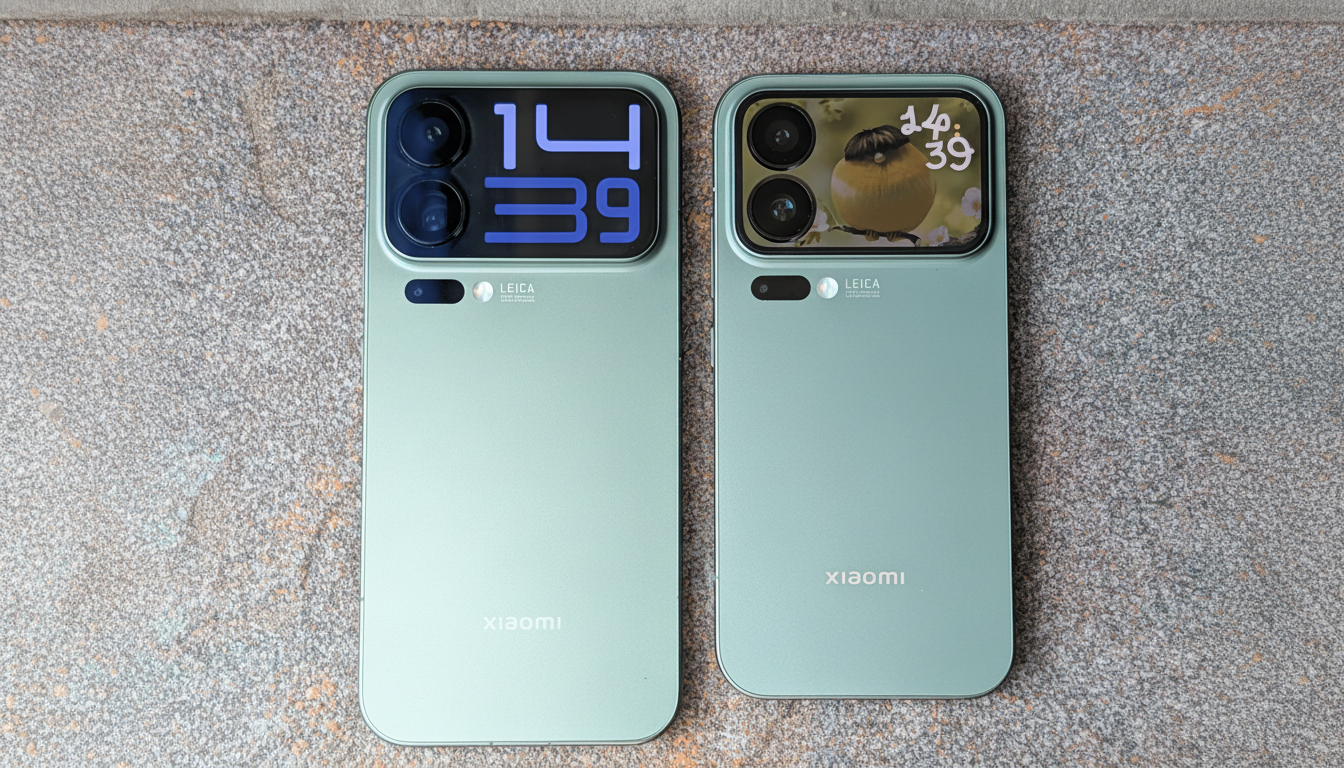The next generation of Android flagships has landed, and it starts with Xiaomi. The company’s new 17, 17 Pro, and 17 Pro Max are the first phones powered by Qualcomm’s Snapdragon 8 Elite Gen 5 at launch, setting an early benchmark for performance, battery ambition, and design experimentation in 2025’s premium tier.
Xiaomi 17 series leads the launch of Snapdragon 8 Gen 5
All three models run the Snapdragon 8 Elite Gen 5 and ship with Xiaomi’s HyperOS 3 atop Android, wrapped in robust IP69-rated bodies. While the plain 17 targets the mainstream flagship crowd, the 17 Pro and 17 Pro Max push into enthusiast territory with more aggressive hardware and extra features.
- Xiaomi 17 series leads the launch of Snapdragon 8 Gen 5
- Rear displays and gaming tricks on the Pro models
- Displays and refresh rates that reach peak brightness
- Batteries break the mold with huge capacities
- Camera hardware with range across all models
- What Snapdragon 8 Elite Gen 5 Means Now
- Pricing and availability outlook for Xiaomi 17 series

Rear displays and gaming tricks on the Pro models
On the Pro pair, that includes a secondary display by the rear cameras—2.66 inches on the 17 Pro, 2.86 inches on the Pro Max. Xiaomi says the screen, which is flush with the back like the DualSense 5’s light bar, serves as a live viewfinder for rear-camera selfies, a soft flash, and a glanceable hub for watch faces, music controls, sticky notes, ride-hailing and delivery alerts, and even playful “interactive pets.”
There’s also a Handheld Console mode that activates with a specialized Bluetooth case featuring four face buttons and a D-pad. It’s a quirky nod to the Nintendo Switch and, more practically, a way to game without firing up the power-hungry main display, handy if you want to play games on long flights.
Displays and refresh rates that reach peak brightness
The Xiaomi 17 Pro uses a smaller 6.3-inch OLED at 2,656 x 1,220 resolution; the Pro Max jumps to a larger 6.9 inches at a slightly lower 2,608 x 1,200 resolution. Xiaomi says both panels are 1–120Hz adaptive refresh capable and can hit a peak of 3,500 nits, with a high-brightness mode that clocks in at 2,000 nits.
The company uses Xiaomi Shield Glass as an alternative to Gorilla Glass, suggesting ongoing development of in-house materials technology.
The standard Xiaomi 17 matches the Pro’s 6.3-inch size, adaptive refresh range, and peak brightness too, giving the smallest version a surprisingly premium screen spec.
Batteries break the mold with huge capacities
Where the series manages to stand out is in battery capacity. The 17 Pro has a 6,300mAh cell, while the Pro Max has an even meatier 7,500mAh, and even the regular Xiaomi 17 weighs in at 7,000mAh. These sizes blow past the 4,800–5,200mAh packs found in most high-end phones and suggest multiple days of use may be possible for mixed usage.
High silicon content (16%) and what Xiaomi is calling the first L-shaped batteries for Android phones are both pointed to as reasons these capacities could be achieved. While silicon-rich chemistries can offer improvements in energy density and charging behavior, the metric to watch going forward is long-term durability, as vendors extend beyond traditional graphite-dominant designs. Logistics constraints may also play into regional variations; oversized batteries can run up against shipping and certification roadblocks, prompting manufacturers to tweak the specs for specific markets.

Charging is similarly notable: 100W wired and 50W wireless across the Pro models, plus compatibility with 100W PPS chargers so you’re not stuck using a proprietary brick. Xiaomi is separately selling a slim, magnetically attached power bank that will attach to an optional case — an Apple-esque accessory play for heavy users.
Camera hardware with range across all models
The 17 Pro and Pro Max have a 50MP main (Light Fusion 950L, f/1.67) and a 50MP ultrawide (OV50M) with a 102-degree field of view — not as wide as some ultrawides but also less distorted toward the edges. The Pro also gains a 50MP 115mm 5x telephoto using Samsung’s Isocell JN5 sensor, with a minimum focus distance of 20cm for tiny detail in tele-macro shots, while the Pro Max gets an upgrade to a 50MP 115mm prism periscope that uses a larger Samsung Isocell GN8 and has a brighter f/2.6 aperture, which should bring improvements in low light and subject separation.
There, the main sensor on the Xiaomi 17 packs a 50MP Light Fusion 950 (1/1.31-inch, f/1.67), alongside a 50MP JN5 tele that can do macro at just 10cm and another ultrawide 50MP snapper. Xiaomi hasn’t said exactly what the focal length of the base model telephoto will be, but it seems to be in the ~60mm (2.5x) range — a good compromise for portraits and everyday zoom.
What Snapdragon 8 Elite Gen 5 Means Now
Qualcomm’s new Elite-tier chip is supposed to lift performance, power efficiency, and on-device AI limits by a hell of a margin, and Xiaomi’s trio here is our first glance at how well those promises pan out in the real world. Listen for reviewers to put these through their paces with prolonged gaming, photo pipelines, and adaptive refresh behavior. Benchmarks like 3DMark’s Solar Bay and demanding titles like Genshin Impact usually show you whether a chip’s power profile holds under heat and consistent load.
Just as crucially, Xiaomi’s giant batteries give the platform space to flex and run hard without throttling, a battle many recent flagships struggle with. Assuming there is little software tuning to do on HyperOS 3 (my assumption), the 17 series could really gunk up the works when it comes to all-day performance without a downside.
Pricing and availability outlook for Xiaomi 17 series
In China, the Xiaomi 17 is priced from 4,499 yuan for a model with 12GB/256GB RAM and storage, the 17 Pro from 4,999 yuan for the same memory and only one storage option, and its sibling at 5,999 yuan for 12GB/512GB.
Pricing and availability: Xiaomi has not announced timing for a global launch. The company’s flagship mainlines have historically seen wider availability around Mobile World Congress, so an international release schedule in line with that cadence would be logical.
Bottom line: The first Snapdragon 8 Elite Gen 5 phones are here, and they come with some atypical battery headroom, playful second displays, and a promise of what the new performance baseline could look like for Android flagships. Rivals will follow; for now, though, Xiaomi has the opening move.

